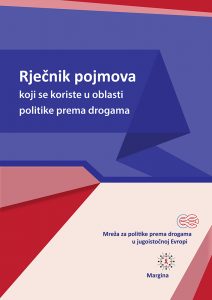The Drug Policy Network South East Europe published the Analysis of the data on drug-induced deaths in Serbia 2008 – 2019.
DPNSEE has prepared the analysis using statistic about the drug-induced deaths managed by the Statistical Office of the Republic of Serbia. The data used are segmented using codes of the causes of death, agreed with the Ministry of Health and the Institute for Public Health “Dr Milan Jovanović Batut”, in accordance with the standard protocol of the European Monitoring Centre for Drugs and Drug Addiction (EMCDDA).
The statistics include annual tables presenting number of those passed away by different indicators: gender, age, location, substance that caused death, consequence of long term use or accidentally, etc.
The key data from the Analysis include:

- 735 people died from drug use in Serbia in the period 2008 – 2019
- 13,60% of them were female
- After sharp drop in 2010 and 2011 and the lowest number of deaths in 2017, last two years we have an increase of 72,73%
- Serbia is in the bottom of the European scale of drug-induced deaths per million people (8,21)
- 2/3 of deceased was in the age range 25 to 40
- 150 deaths were consequence of long-term use of drugs. Out of them 97 was connected with opioids, 2 with cocaine, 4 with hallucinogens and 47 with multiple substances
- 585 were consequence of intoxication, with 212 accidental, 48 intended and 325 with unclear intention
- 206 intoxications were related to heroin use, 81 to other opioids and 122 with psychodysleptics; only one with cannabis derivatives and none with LSD
- By far, most of the intoxications happened at home
- In 2018, two people aged 17 – 19 died; in 2019, two aged 65+
DPNSEE emphasized controversies and questions with reliability of the data:
- Ministry of Health has no updated data on causes of death. We must wait until mid-next year to get the data from the Statistical Office of the Republic of Serbia to know which they were.
- Drug-induced deaths are not always reported. Instead, they are classified as stroke, heart attack, heat stroke or suffocation by vomiting.
- Other causes of death are also not registered, including AIDS and Hepatitis caused by using infected sterile equipment for injecting drugs (registered earlier), chronic pneumonia, liver damage, random injuries and violence and suicides caused by drug use.
There are no yet data about coronavirus influence to drug-induced deaths in Serbia. But, the Analysis envisages that it may result in more deaths due to additional risk of overdose and intoxication caused by depression, anxiety, stress, isolation and loneliness, use of whatever drug is available and mixing them (also with alcohol and legal drugs), lack of support (doctor visits, group counselling, treatments, emotional support, etc.), lack of basic income, lack of proper nutrition, etc.
Naloxone is legally used in Serbia only by emergency ambulance staff. Civil society organisations have proposed wider availability of naloxone, but this proposal was rejected during the process of amending the Law on Psychoactive Controlled Substances.
 To read the Analysis, please follow this link>>>.
To read the Analysis, please follow this link>>>.
The presentation with bilingual data (Serbian and English) is available following this link>>>.
Two years after the Analysis was published, the Drug Policy Network South East Europe published the document with new updated data. It indicates that the number of drug-induced deaths in the last two years have decreased by 9%, but it is still high. Data also show that average age of those deceased has increased from 8,36 to 46,04, including 12 persons aged over 60. Number of females have increased for 43%. A worryng data is that the number of those who died because of use of methadone doubled.
 The updated document with data from 2020 and 2021 is available following this link>>>.
The updated document with data from 2020 and 2021 is available following this link>>>.
 Kurrikula për të punuar me të rinjtë në rrezik
Kurrikula për të punuar me të rinjtë në rrezik Curriculum for working with youth at risk
Curriculum for working with youth at risk Kurikulum za rad sa mladima u riziku
Kurikulum za rad sa mladima u riziku



 To read the Analysis, please
To read the Analysis, please  The updated document with data from 2020 and 2021 is available
The updated document with data from 2020 and 2021 is available 
 The document is currently available only in Serbian
The document is currently available only in Serbian  The publication “Documenting cases of discrimination of youth at risk in Western Balkans” is available
The publication “Documenting cases of discrimination of youth at risk in Western Balkans” is available 

 Download PDF of the statement
Download PDF of the statement




